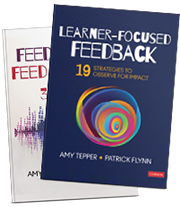I wrote in a previous post about what we believe authentic observation practice looks like and how it can influence a deeper, more meaningful application of teacher performance and practice reviews related to teacher evaluation models. We have not hidden from the fact that we believe much more in the validity and possibility associated with a “learning approach” to observation practice than that which is being sold throughout our state (and most states at the moment) of “scripting” a lesson and “tagging” evidence. One Superintendent recently stated when I presented our ReVision Learning Supervisory Continuum, “This is what I need to help my administrators understand the process and stop referring to themselves as ‘Taggers’.” What we want more than anything for the administrators/evaluators we are supporting is for them to begin calling themselves “teachers” of teachers not “taggers” of teacher evidence. Hence, our strong advocacy in our previous post to observation practices for learning, not a scripted defense.
What we also know is that most evaluation systems have given short shrift to the importance of artifacts and conversation in supporting a learning focused relationship between the teacher and their supervisor/evaluator. We are working with evaluators to understand that observation is only one modality of evidence collection and it is certainly not the only one. There are three modalities to collection of information about teacher performance and practice that need to be built into teacher evaluation models if the system will truly support the teacher as a learner. These three are:
- observation (the evaluator has seen the performance and practice being applied),
- artifact review (the observer reviews documentation aligned to the performance and practice), and
- collegial conversations (through structured conversation, a teacher has shared a depth of understanding about the performance and practice).
Our points on observation were made clear in the previous post so let me expand on the next two:
Artifact Review:
 Both teacher-developed and student-developed artifacts provide deep insights into teacher capacity across multiple domains of most teaching and learning frameworks (Danielson, C (2008). The Handbook For Enhancing Professional Practice: Using The Framework For Teaching In Your School, Alexandria, VA, Association for Supervision & Curriculum Development). Analysis of these artifacts should become a substantial part of any administrator’s/evaluator’s skill set when evaluating teacher performance. One of the best ways to carry out this recommendation is for supervisors/evaluators to review the indicators of practice and determine useful and accessible documents to helping demonstrate that practice. The most concrete example is that of a lesson plan or a unit plan in helping to determine performance relating to the way a teacher plans for student learning. A direct but less used example might be that of assessing communications with parents. In Connecticut, the Common Core of Teaching (state performance standards for teachers) includes an indicator of practice that includes the following “proficiency” statement:
Both teacher-developed and student-developed artifacts provide deep insights into teacher capacity across multiple domains of most teaching and learning frameworks (Danielson, C (2008). The Handbook For Enhancing Professional Practice: Using The Framework For Teaching In Your School, Alexandria, VA, Association for Supervision & Curriculum Development). Analysis of these artifacts should become a substantial part of any administrator’s/evaluator’s skill set when evaluating teacher performance. One of the best ways to carry out this recommendation is for supervisors/evaluators to review the indicators of practice and determine useful and accessible documents to helping demonstrate that practice. The most concrete example is that of a lesson plan or a unit plan in helping to determine performance relating to the way a teacher plans for student learning. A direct but less used example might be that of assessing communications with parents. In Connecticut, the Common Core of Teaching (state performance standards for teachers) includes an indicator of practice that includes the following “proficiency” statement:
“Communicates frequently and proactively with families about learning expectations and student academic or behavioral performance and develops positive relationships with families to promote student success.”
While potentially observable during parent nights or parent teacher conferences, I know few evaluators who have the time to sit in on every teacher-parent meeting. Instead, evaluator review of artifacts such as webpages, email communications or letters to parents can provide quality insight to this important teacher practice. Furthermore, this can happen collaboratively with a teacher during pre-organized meetings so that the review becomes another opportunity to nurture a collegial and supportive relationship towards learning and growth.
Artifact review also should not be limited to teacher-produced documents and should include student-created artifacts as well. I recently worked with a group who was discussing how they reviewed the for the following (high level) performance statement:
“Strategies engage students to transfer critical-thinking and problem-solving skills to new or different content, applications, or contexts.”
One administrator shared how he was able to provide evidence in alignment with this indicator based on review of a series of student generated YouTube videos based on the concepts being taught in one of his teacher’s classes. In this instance, the administrator was able to identify (and celebrate) this outcome aligned with the rubric indicator, citing it as clear evidence of quality teacher practice.
Collegial Conversations:
What is a “collegial conversation”?
Simply put, it is engaging in targeted conversations with a teacher about practice to help support an evaluator’s understanding of what the teacher knows and is able to do and a teacher’s understanding about the type of practice that embodies the vision of teaching within a school. When asked why we feel this is such an important part of an evaluator’s toolkit in assessing teacher performance and practice, we typically respond with how influential this strategy can be at building a relationship and clarifying expectations about the importance of setting a vision for learning within a school. In fact, while some have questioned the validity of collegial conversations in supporting an understanding of teacher performance and practice, this concern is typically rooted in what should be a more threatening concern; a lack of trust within the relationship between the evaluator and teacher. In other words, those who say, “You can’t use what a teacher says they do as part of an evaluation because they could just be talking the talk,” may be viewing their work as an evaluator as formulating a defense versus fostering a relationship. We believe the latter is the only way to ensure growth and development for both the teacher and the school as a whole.
Evaluators can work to enrich their review of performance and practice by taking time to review their rubric with staff and collaboratively determine the methods best suited for examining practice. Establishing the evidence modality with teachers can not only offer a way to understand whether or not the teacher is engaging in the variety of actions required for great teaching but also provides for an open discussion among all staff members about what quality practice looks like and how certain strategies may be creating the best results. Evaluators should work directly with teachers to identify those areas potentially best evaluated based on documents and establish a list of exemplars that help demonstrate the practice. This will expand understanding of the operational nature of the rubric while generating an additional layer of ownership within the process, continuing to foster a positive evaluation environment.
Repeatedly, I have asked evaluators to tell me how they know that quality teaching practice is occurring in their buildings. I typically will get answers like, “I observe teachers in classes,” or “I see teachers in the PD or staff meetings,” or “I watch teachers during duties.” When I ask about how they know if a teacher effectively plans assessment of student performance or collaboratively reviews data within their team, or communicates with parents, they are often without targeted strategies. Artifact review and direct one-one dialogue about practice is the most effective way to determine if these essential practices are a part of a teacher’s repertoire. If it is not currently written into the district plan, begin to infuse this practice into feedback sessions and conferences by asking teachers to identify documents that represent or qualify performance in a given area on the rubric. Such analysis will enhance the dialog and drive towards improved teaching and learning while contextualizing the mission and vision of the school – effective teaching to ensure powerful outcomes for students.





You have a gorgeous-looking website that is a pleasure to navigate through!
Souhegan High School is an environment where a teachers-observing-teachers strategy thrives. A culture exists “where people report with pride that they push’ one another professionally,” according to Meaney. Both new and veteran teachers “value collegial relationships as a means to professional development,” she said.
Online levels have gotten an more and more widespread and legitimate possibility for
professionals who want to hone their experience https://math-problem-solver.com/ .
Writer: OSA Webmaster1 Mathematics is among the topics that people have to return across in every side of their
lives.